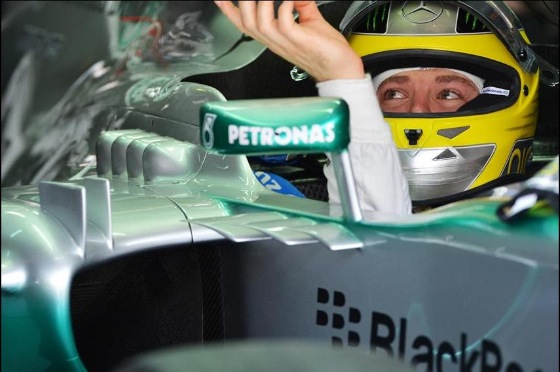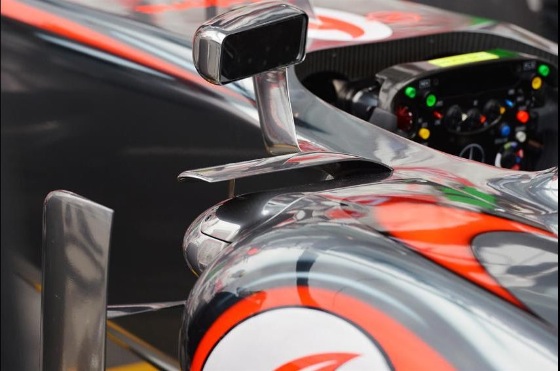A vortex generator is a small aerodynamic surface which consists of a small vane that creates a vortex. They’re mostly used on aircraft to delay or disturb the separation of the flow of air from the boundary layer of a surface.
In Formula One they’re used just above the sidepods of the f1 car to “re-attach” the airflow above the sidepods so that the air flows along the coke-bottle shape of the car. This better aids the use of the coanda exhaust system that Formula One teams are using to create more downforce at the rear of the car by utilising the exhaust gasses. This extra airflow, together with the coada exhaust, are what teams have used to create extra downforce at the rear of their cars since the exhaust blown diffusers were banned.
F1 Teams have used different methods to re-attach this airflow over the sidepods. Ferrari are using a series of horizontal vanes that are alongside the driver on either side of the car just behind the wing mirrors.
Mercedes F1 are running a combination of the horizontal vanes along the cockpit and a series of vortex generators above the sidepod.

Horizontal vanes and vortex generators on the Mercedes F1 car. Photo: F1.com
Mclaren and Lotus seem to be running a slightly different configuration. They have a horizontal flap that extends across the top of the sidepod.

McLaren F1 horizontal flap across the top of the sidepod. Photo: F1.com
The rest of the teams, Red Bull, Torro Roso, Caterham and Force India are running vertical vane vortex generators above the sidepods. The number of vanes varies between the teams, but we’re mostly seeing two to three vanes.

Vertical vanes seen on the Caterham and Red Bull. Photo: F1.com
Williams, Sauber and Marussia are yet to employ the use of vortex generators on their F1 cars. We’re only at the beginning of the season so it’s safe to say that somewhere along the line we will see them with it on their cars.
The height of a vortex generator usually indicates the height of the boundary layer they want to disturb. Which is why some teams have tall vortex generators and others have short ones.


